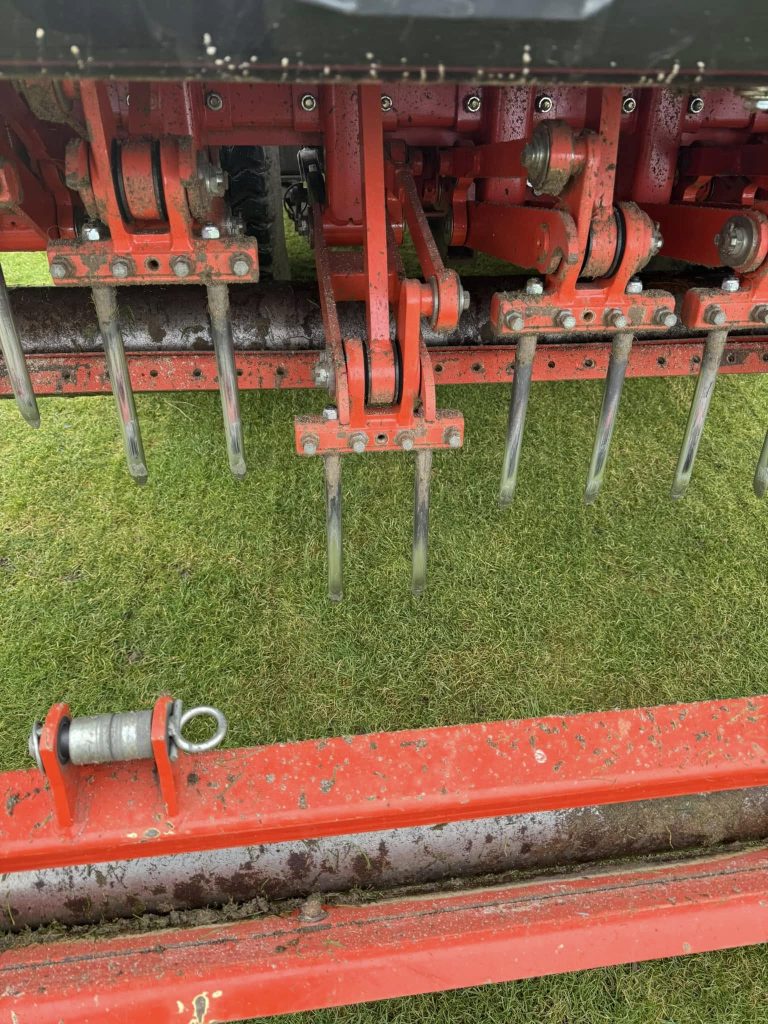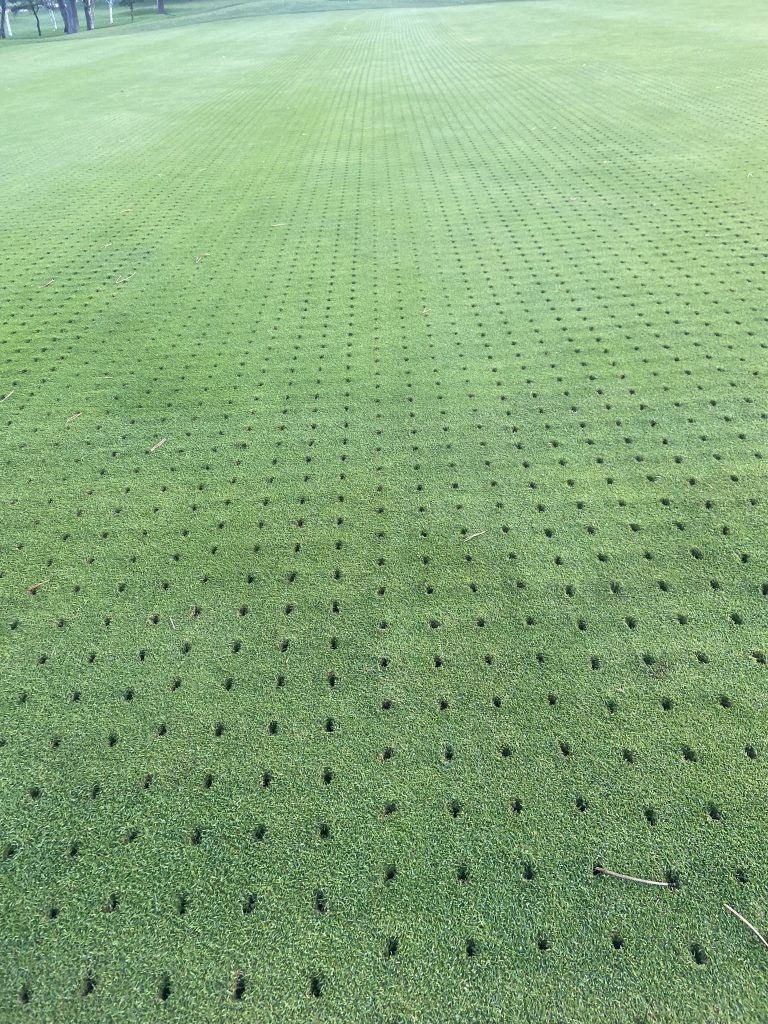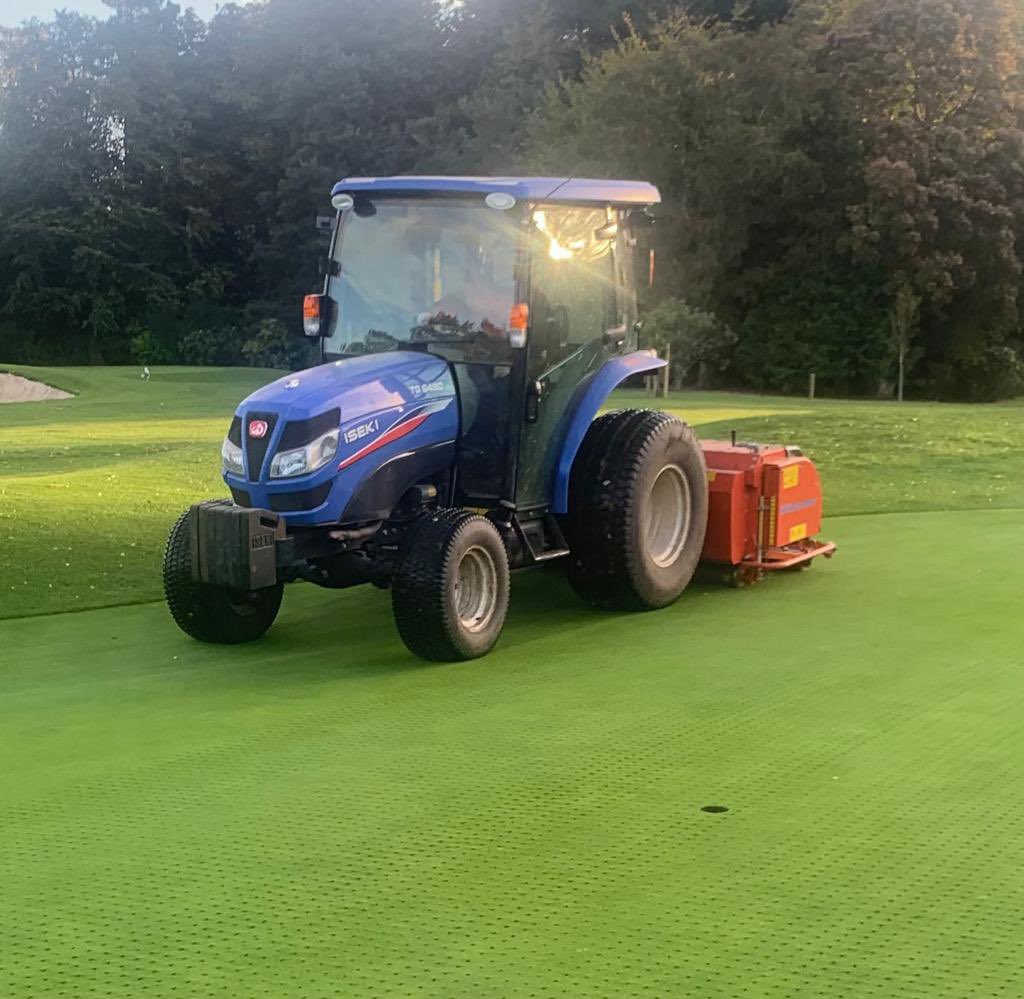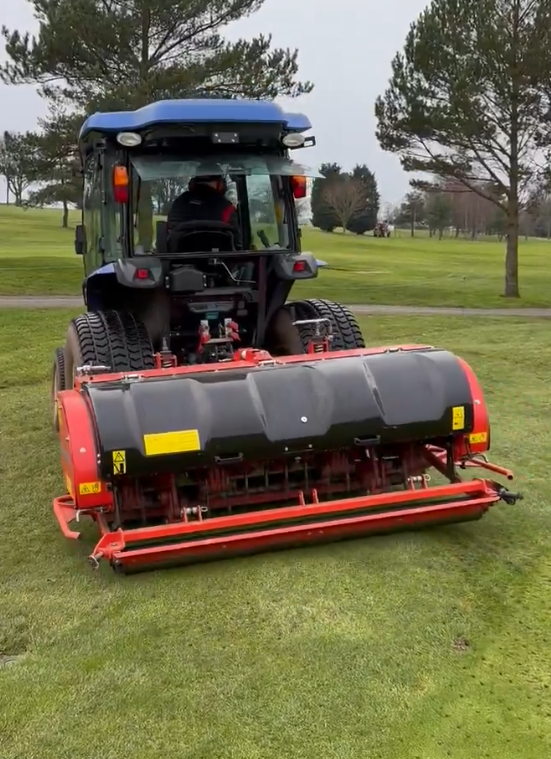Chris Yeaman, Course Manager at The Royal Burgess Society of Golfers in Edinburgh, playfully jokes that he gives his aeration schedule ‘protected status’.
“Aeration is an important part of the job; it’s so essential here, it’s entered into the planning calendar each September. We know a year in advance the exact weeks we want, amending only to make sure conditions are suitable.

The Barnton club is situated 20 minutes’ drive from Princes Street and Edinburgh Castle and is reputed to be the oldest golfing society in the world, tracing its roots back to 1735.
With its impeccable historic credentials, The Royal Burgess, as you would expect, is an exceptional parkland course. The legendary Tom Morris and, later Willie Park Jnr both had a hand in the creation of the course in the early days, followed by James Braid. Today, it is still one of Scotland’s busiest with an active membership and visitors attracted from across the world.
Annually, Chris Yeaman and his team of seven, opt for two all-over aeration treatments course wide and then a series of regular monthly interventions to the greens and approaches, avoiding June, the busiest month in their calendar.
Chris Yeaman said: “We choose early spring and early autumn to do the whole course. This year, early spring for us was the two middle weeks of February where we had our Wiedenmann Terra Spike GXi8 HD out seven hours a day for the fortnight. We started on greens, moved to tees, surrounds and approaches, then fairways, semi roughs and walkways. We used 20 mm tines to a depth of 25 cm, with a very tight hole pattern of 5 cm x 5 cm. We check tines every morning for wear to be sure we get the same depth.
“Even adding a little bit of heave, we just go to 5º, nothing more, doesn’t stretch or elongate the holes; just straight in and out, delivering heave below the surface where we can’t see it.
“We realised a few years ago the GXi8 was exceptional. It is the only machine to deliver everything as tight but still leave everything incredibly clean. I don’t know whether it’s because the GXi8 is so quick, or whether because the action is so smooth, but immediately afterwards, you can putt on the greens without having to roll and the ball doesn’t deviate.”

With the first of 2025’s key phases completed; aeration becomes more discreet as the year progresses.
“Going into the season we go much smaller. Tine diameter halves and we move the pattern right out … golfers don’t love aeration, and we are mindful,” continued Chris Yeaman.
“Mid-March we’ll go on the greens again, punching holes with ten mm diameter tines down to 15 cm, with 5º heave and a 10 cm x 10 cm pattern. We dress with sand first, run over with the Terra Spike, then brush sand into the holes. We have found that’s the best way.
“We alternate the tine size every month to avoid creating a pan layer below the surface. In April, we’ll reduce the tine diameters to 8 mm, go down no more than 10 cm choosing another wide pattern. Then May, it’s back up to 10 mm diameter tines punching to 15 cm.
“During the summer, so July and August, we come in early at 03.00 am and do nine holes the first morning ahead of play and roll them. The next morning, we do the remaining 9 holes and roll. Genuinely, the members don’t know the greens have been done.”
As well as regular aeration, The Royal Burgess embarked three years ago on a long-term greens’ renovation project which this winter will reach its midpoint. Their goal is to add new drainage to help remedy water retention.
“Some of our greens are clay, we’ve got one sand green, but most are old ‘push up’ greens,” explained Chris Yeaman.
“When we’ve dug into these, we’ve found a lot of ash and clinker, materials historically used to build greens. Originally this combination was highly regarded for construction, however, as years go by, the ash and clinker bind together so if water can’t drain through, the only way for the water to go is back up.
“Each of these past three winters, we have re-laid full drainage to two or three greens and are beginning to reap the rewards. Each time the team has used a trencher and cut a series of 10 cm tracks at 45cm deep at 3m intervals to where a main drain is located. Where we’ve added positive drainage, change is already afoot, and the greens are firming back how we want.”
The Royal Burgess’s Terra Spike GXi8 HD was supplied by Scottish Wiedenmann UK dealer, Fairways GM and is paired to an ISEKI TG 8490 tractor. “For us that’s the perfect pairing,” concluded Chris Yeaman. “When you lift the Wiedenmann up with the 3-pont linkage, the PTO cuts off and when you put it back down, it goes back on, together everything is easy.”


